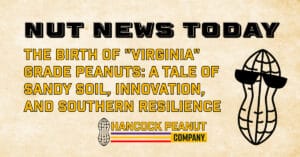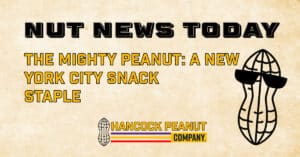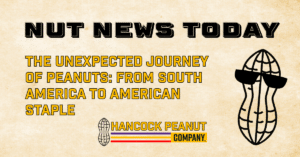Top 10 Unusual Ways Peanuts are Used

- Industrial Applications: Peanut shells, a byproduct of the food industry, are surprisingly versatile. They can be ground into an abrasive material used for polishing furniture and blasting surfaces. Additionally, peanut shells can be used as a biofuel or as a filler material in various construction and manufacturing processes.
-
Cosmetics: Peanut oil, with its unique properties, finds its way into various cosmetic products like lotions, creams, and soaps. This oil acts as a moisturizer and is known for its gentle and non-comedogenic (doesn’t clog pores) nature.
-
Medicine: Although not a mainstream application, peanut oil is sometimes used as a base for certain medications due to its hypoallergenic properties and stability. Additionally, research explores the potential of peanut components in treating various conditions, although further study is required.
-
Explosives: While not a common practice today, peanut hulls, due to their high cellulose content, were once used as a filler material in explosives during World War II when more traditional materials were scarce.
-
Fire Starter: Dried and crushed peanut shells, with their high oil content, can be used as an eco-friendly fire starter for fireplaces or campfires.
-
Textiles: Research has explored the use of peanut shells as a natural fiber in the production of textiles. These fibers, being lightweight and biodegradable, offer potential for sustainable clothing options.
-
Ink: The oil extracted from peanut shells can be processed to create bio-based ink, offering an eco-friendly alternative to petroleum-derived inks.
-
Water Filtration: Peanut shells can be used as a natural filtration medium in water treatment processes. Their porous nature allows them to capture impurities while remaining non-toxic and biodegradable.
-
Animal Feed: Peanut hulls, after processing to remove oil and toxins, can be used as a nutritious and cost-effective supplement in animal feed, particularly for ruminant animals like cows and sheep.
-
Art and Crafts: Due to their unique texture and shape, peanut shells can be employed by creative individuals for various artistic purposes, ranging from mosaic creations to decorative art pieces.
Thanks for coming to our Nut Tip Talk. 😉
Shop Hancock Peanut Company, today!
Follow us on social here: Instagram | Facebook | Twitter | Threads | LinkedIn | TikTok
Top 10 Unusual Ways Peanuts are Used Read More »












